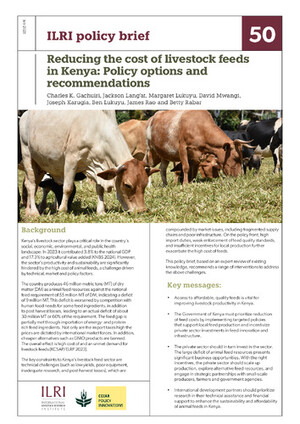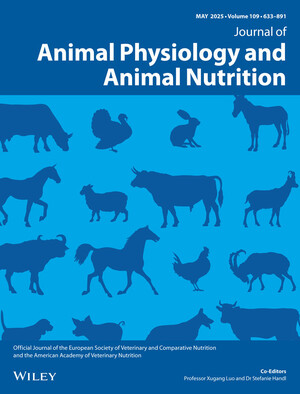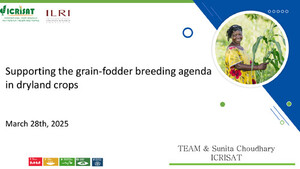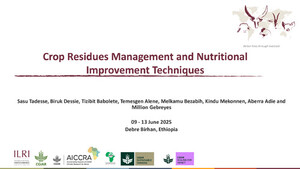
The role of legume forages as supplements to low quality roughages - ILRI experience
Abstract
Supplementation of basal diets with multipurpose trees (MPTs) increases essential nutrients available to rumen microbes, increases rate of passage of particulate matter by 23-53 percent and of liquid matter by 9-43 percent. Supplementing teff straw with graded levels of cowpea or lablab significantly increased microbial N supply in calves. Supplements of Sesbania and Chamaecytisus spromoted higher N retention compared with unsupplemented roughage. The ILRI's work on evaluation of MPTs demonstrated that type, form and quantity affect microbe-MPT interactions and, consequently, the utilization of the basal diet. Using gas production as an index of fermentation, it was shown that Chamaecytisus palmensis (Tagasaste) is fermented rapidly while Acacia angustissima is fermented slowly by mixed ruminal microbes. Volatile fatty acid (VFA) analysis showed that mixed ruminal microbes produced most (63.9 mol/ml) VFAs from Sesbania sesban while A. angustissima fermentation produced the least (15 mol/ml) amount at 12 h. Extracts of A. angustissima inhibited the growth of pure cultures of rumen bacteria (Ruminococcus albus, Ruminococcus flavefaciens, Prevotella ruminicola and Streptococcus bovis). Multipurpose trees affect protozoal populations in sheep differently. Sesbania sesban significantly (P<0.04) increased while Acacia cynophylla decreased the numbers of protozoa in Ethiopian highland sheep fed a basal diet of maize stover supplemented with various MPTs. Milk production and growth responses of cattle supplemented with MPTs or browses were variable.
Citation
Animal Feed Science and Technology;69(1-3): 27-38










